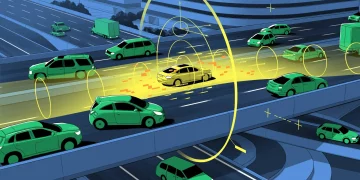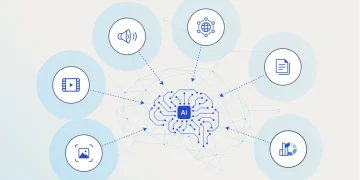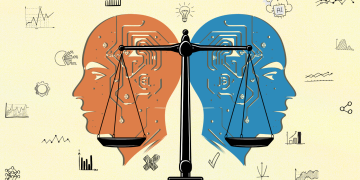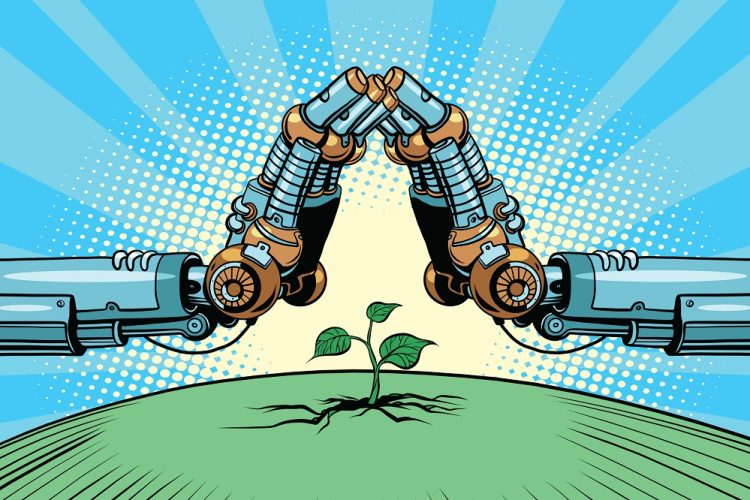The issue of climate change has emerged as one of the most critical challenges of our time. In the face of rising global temperatures, extreme weather events, and the degradation of ecosystems, the need for innovative solutions has never been more pressing. Among the most promising technological advancements in combating climate change is Artificial Intelligence (AI). AI, with its ability to process vast amounts of data, identify patterns, and provide actionable insights, is playing a pivotal role in monitoring environmental changes, optimizing renewable energy, reducing carbon footprints, and fostering climate resilience. This article explores the role of AI in addressing climate change, its applications, and the opportunities and challenges that lie ahead in scaling these efforts.
AI in Monitoring and Predicting Environmental Changes
One of the most significant ways AI is contributing to the fight against climate change is through the monitoring and prediction of environmental changes. Environmental data is often vast, complex, and multifaceted, involving variables like temperature, precipitation patterns, wind speeds, ocean currents, and much more. Traditional methods of environmental monitoring involve time-consuming manual efforts and limited geographic coverage. In contrast, AI can process enormous datasets quickly and make predictions that were previously unimaginable.
AI-powered tools such as satellite imagery and remote sensing are transforming how scientists track environmental changes. These technologies use AI algorithms to analyze images of Earth taken from space, identifying signs of deforestation, melting glaciers, and other indicators of climate change. Machine learning (ML) algorithms can also detect subtle changes in patterns that may not be immediately apparent to human observers. For example, AI can predict areas at high risk of wildfires by analyzing weather data, vegetation conditions, and historical fire patterns. Similarly, AI models are being used to predict sea level rise, helping coastal communities plan for future impacts.
Beyond satellite imagery, AI is also used in climate modeling to predict future environmental changes. These models can simulate how different factors, such as greenhouse gas emissions or land-use changes, might influence global temperatures, weather patterns, and ecosystems. AI improves the accuracy of these models by processing vast amounts of real-time data and continuously updating predictions based on new information. This is particularly important for climate adaptation strategies, as accurate predictions can help governments, businesses, and communities prepare for the impacts of climate change.
Applications in Renewable Energy Optimization and Carbon Footprint Reduction
The transition to renewable energy is a central element in mitigating climate change. AI plays a crucial role in optimizing the production and distribution of renewable energy, such as solar, wind, and hydropower. By enhancing the efficiency of renewable energy systems, AI helps to reduce reliance on fossil fuels and lower greenhouse gas emissions.
One of the key applications of AI in renewable energy is in predicting energy production. Solar and wind energy are intermittent by nature, with their availability varying depending on weather conditions. AI models can predict energy generation based on real-time weather data and historical performance, enabling better integration of renewable energy into the grid. For example, AI can forecast when a wind turbine is likely to generate peak energy, helping utilities balance the grid and reduce reliance on fossil-fuel-powered backup systems.
Additionally, AI is being used to optimize energy storage solutions. As renewable energy production fluctuates, the ability to store energy efficiently becomes essential. AI-driven energy storage systems can predict energy demand and supply patterns, allowing for smarter energy storage and discharge cycles. This helps to ensure that excess energy produced during periods of high generation can be stored and used during periods of low generation, reducing the need for traditional energy sources.
AI is also being applied to improve the energy efficiency of buildings and industries. Machine learning algorithms can analyze data from sensors embedded in buildings, such as temperature, humidity, and occupancy levels, to optimize heating, ventilation, and air conditioning (HVAC) systems. This reduces energy consumption and carbon emissions. In industrial sectors, AI is being used to optimize manufacturing processes, reduce waste, and improve supply chain logistics, all of which contribute to carbon footprint reduction.
Another important application of AI is in electric vehicle (EV) optimization. AI algorithms can predict the most efficient routes for EVs, optimizing fuel consumption and reducing emissions. AI is also being used in battery management systems for EVs to improve battery life, efficiency, and charging times, further contributing to a reduction in carbon footprints.
Case Studies of AI-Driven Climate Initiatives
Several organizations and governments have already implemented AI-driven initiatives to address climate change. These case studies provide valuable insights into the practical applications and effectiveness of AI in real-world climate solutions.
1. Google’s AI for Renewable Energy
Google has been at the forefront of using AI to power its renewable energy initiatives. The company has developed AI models that predict energy usage across its data centers, allowing for more efficient use of renewable energy sources. Google’s AI systems are able to predict when and where wind and solar energy are available, ensuring that the company can use clean energy whenever possible. By doing so, Google has achieved its goal of running all its data centers on renewable energy and has made significant strides toward reducing its carbon footprint.
2. IBM’s Green Horizons Project
IBM’s Green Horizons project is another notable example of AI in combating climate change. This initiative uses AI and machine learning to help cities reduce pollution and manage energy resources more efficiently. In China, IBM’s AI systems have been used to predict air quality and recommend measures to reduce pollution. By integrating data from various sources, including weather, traffic, and industrial activities, IBM’s AI platform provides real-time insights into environmental conditions, helping authorities implement policies to protect public health and mitigate climate change.
3. AI for Reforestation
AI is also being used to combat deforestation, a key driver of climate change. Companies like Microsoft are using AI to monitor forests and identify illegal logging activities. AI-powered drones and satellite imagery can detect changes in forest cover, enabling faster responses to illegal activities. Additionally, AI is being used in reforestation efforts, helping to identify optimal planting sites and monitor tree growth. For example, in partnership with the World Resources Institute, AI is being used to map areas that are suitable for reforestation and track the health of planted trees.
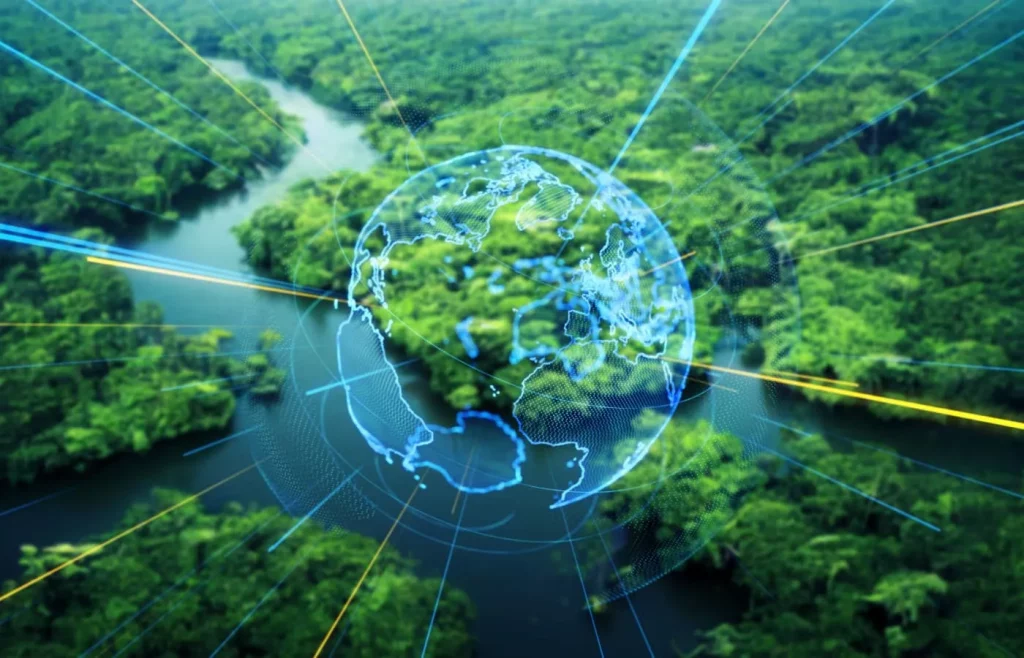
Challenges and Opportunities for Scaling AI in Sustainability Efforts
While the potential of AI in tackling climate change is immense, there are several challenges that need to be addressed in order to scale these efforts effectively.
1. Data Availability and Quality
AI models rely heavily on large datasets to make accurate predictions. In many regions, especially developing countries, access to high-quality environmental data is limited. Without sufficient data, AI algorithms may not perform effectively, leading to inaccurate predictions and suboptimal climate solutions. To overcome this challenge, governments and organizations need to invest in better data collection and sharing infrastructure.
2. Ethical and Social Considerations
AI can have significant social and ethical implications. As AI systems become more widespread, it is important to ensure that their deployment does not disproportionately impact vulnerable communities. For example, AI-driven decisions in energy distribution could favor wealthier areas, leaving poorer regions without access to essential services. There is also the risk that AI could exacerbate inequalities if the benefits of its applications are not shared equitably. Ensuring fairness and inclusivity in AI solutions is critical to their long-term success.
3. Scalability and Integration
While AI is being successfully implemented in various pilot projects, scaling these solutions to a global level is challenging. Different regions face unique environmental challenges and require tailored AI solutions. Additionally, integrating AI into existing infrastructure, such as energy grids and industrial processes, can be complex and costly. For AI to achieve its full potential, there needs to be collaboration between governments, industries, and tech companies to create standardized frameworks for AI deployment and ensure that AI-driven solutions are accessible to all.
4. Policy and Regulation
AI is evolving rapidly, and governments must create policies that promote its responsible use in combating climate change. This includes establishing regulations around data privacy, AI accountability, and ensuring that AI systems are transparent and explainable. Effective policy frameworks will be essential in unlocking the full potential of AI while minimizing risks.
Despite these challenges, the opportunities for scaling AI in sustainability efforts are vast. By addressing these barriers, AI has the potential to drive meaningful change and contribute to global efforts to combat climate change.
Conclusion
AI is poised to be a transformative force in the fight against climate change. From monitoring environmental changes to optimizing renewable energy production, reducing carbon footprints, and driving reforestation efforts, AI is already making significant contributions. However, to realize the full potential of AI in sustainability, it is crucial to address challenges related to data availability, ethical considerations, scalability, and regulation. With the right investments and policies in place, AI can play a pivotal role in building a sustainable future for generations to come.



